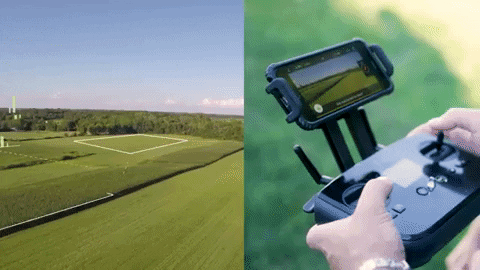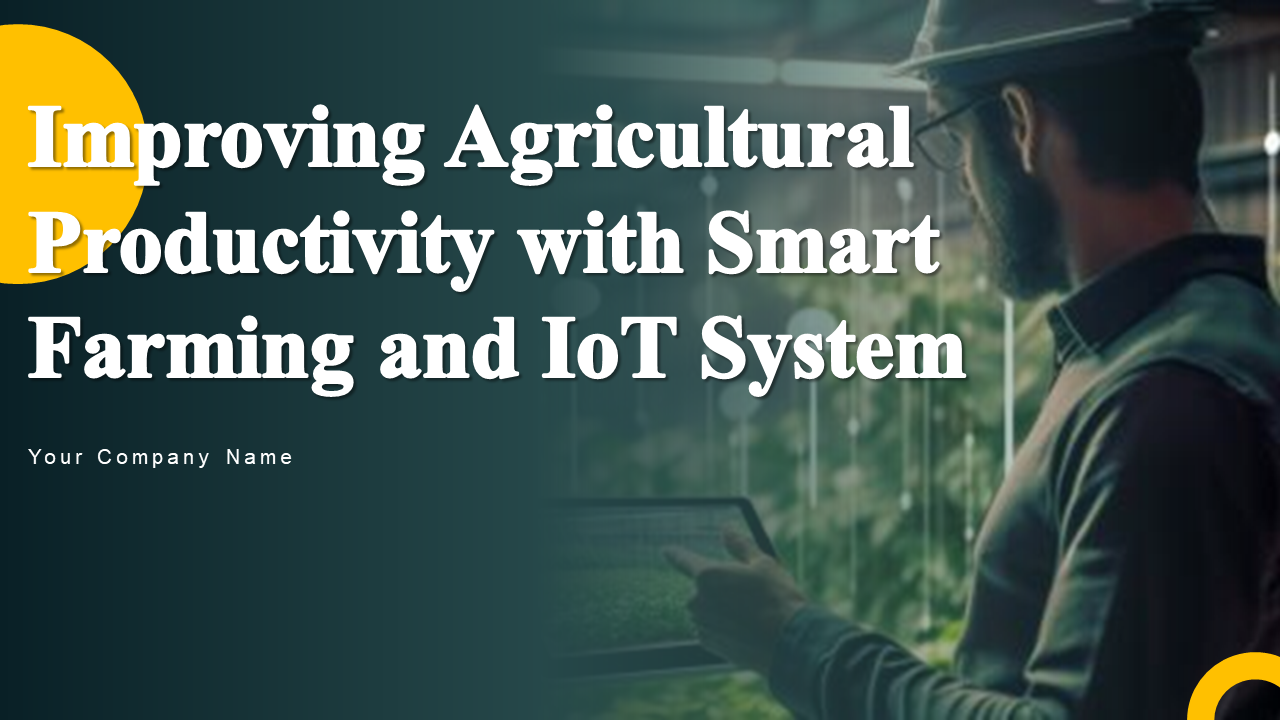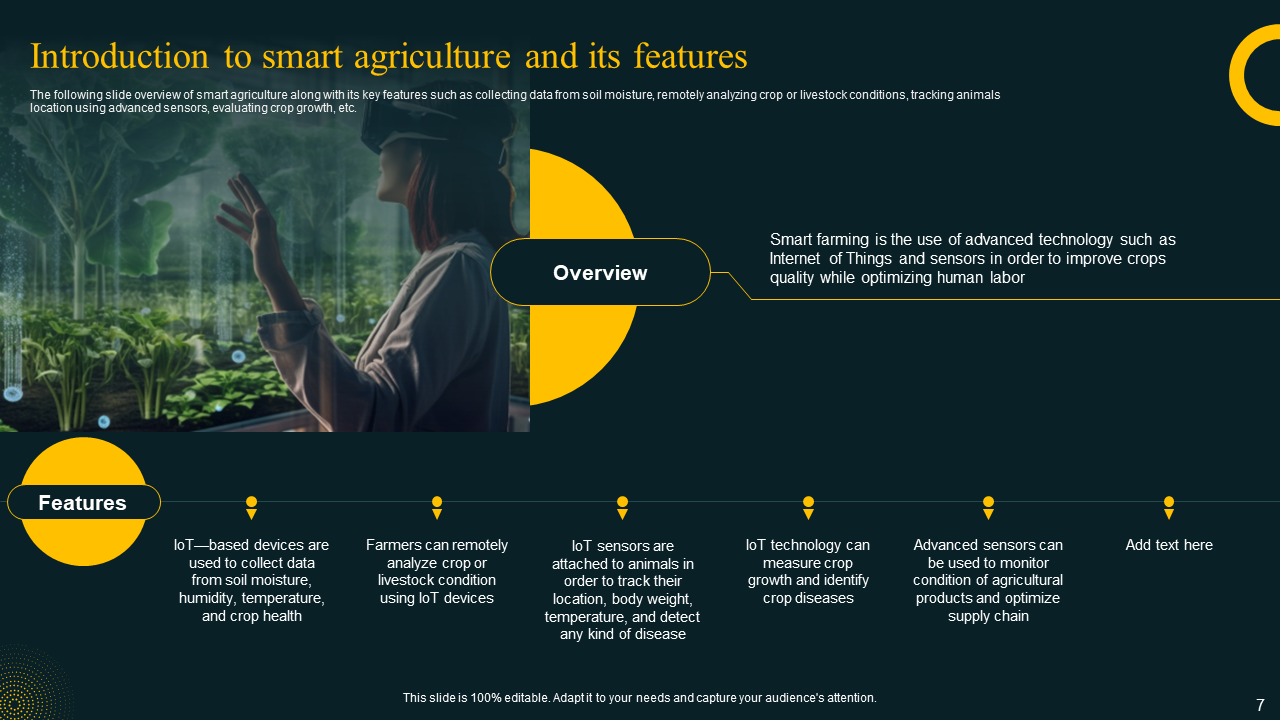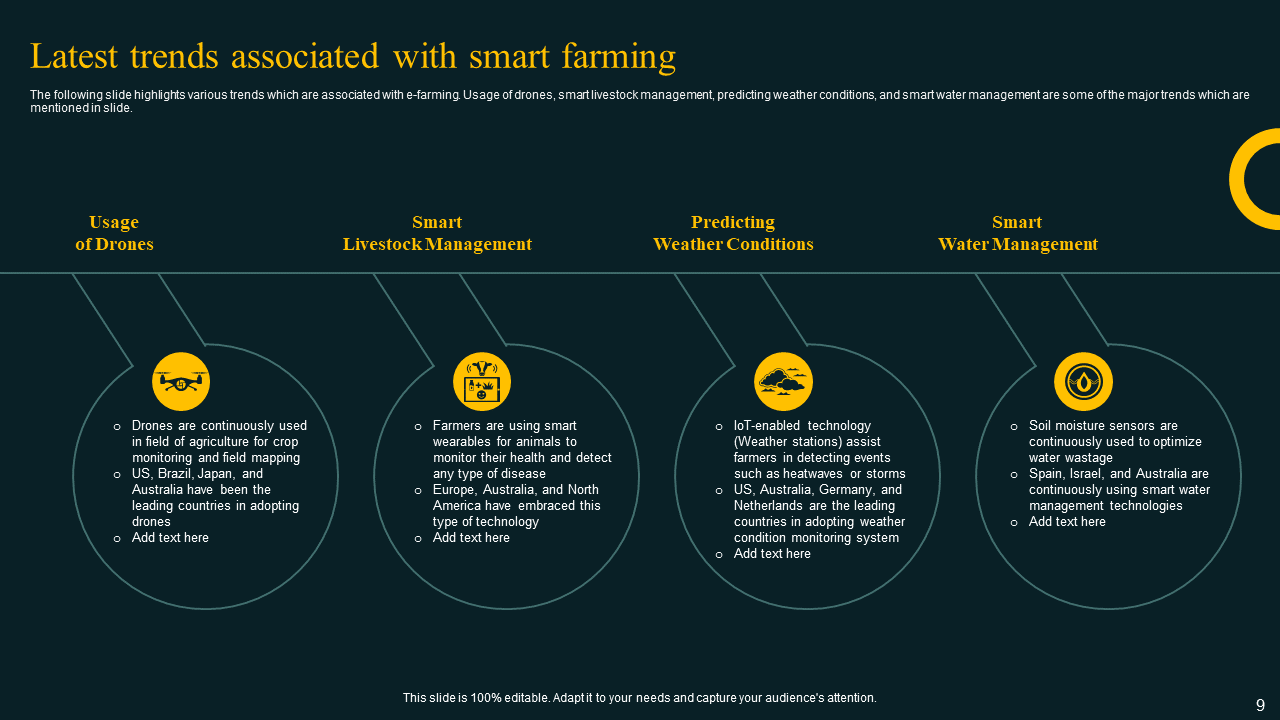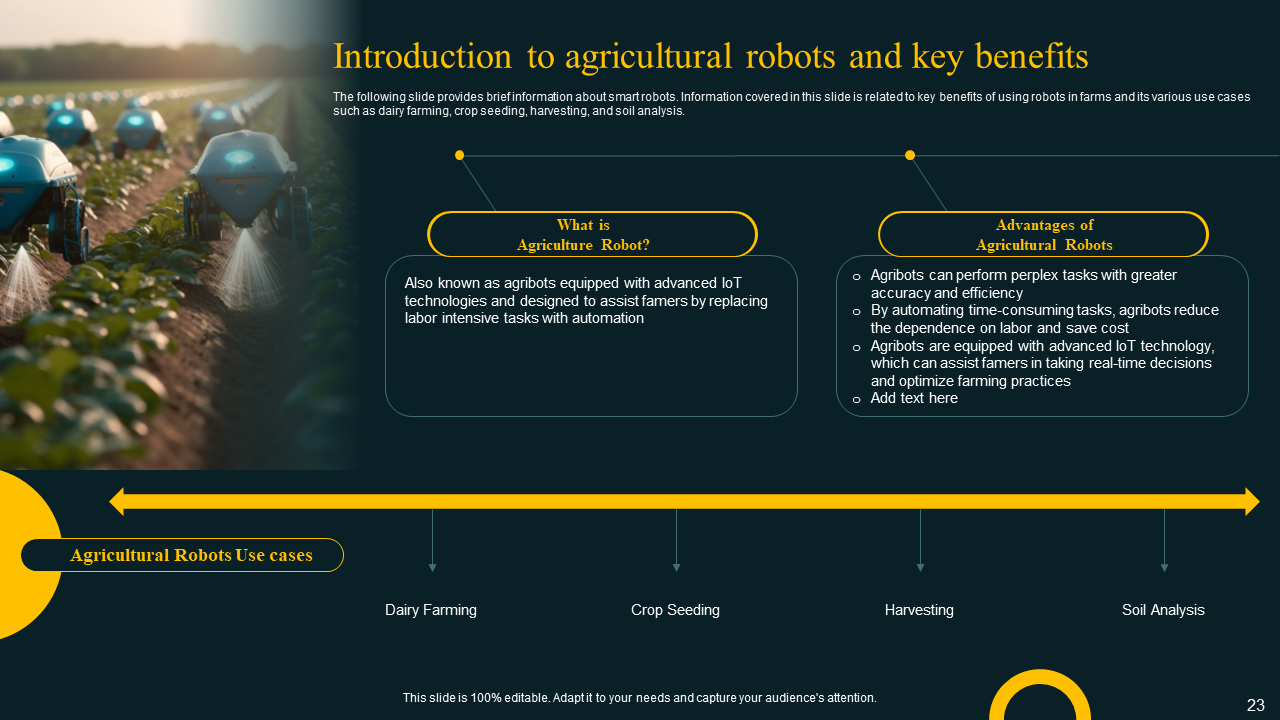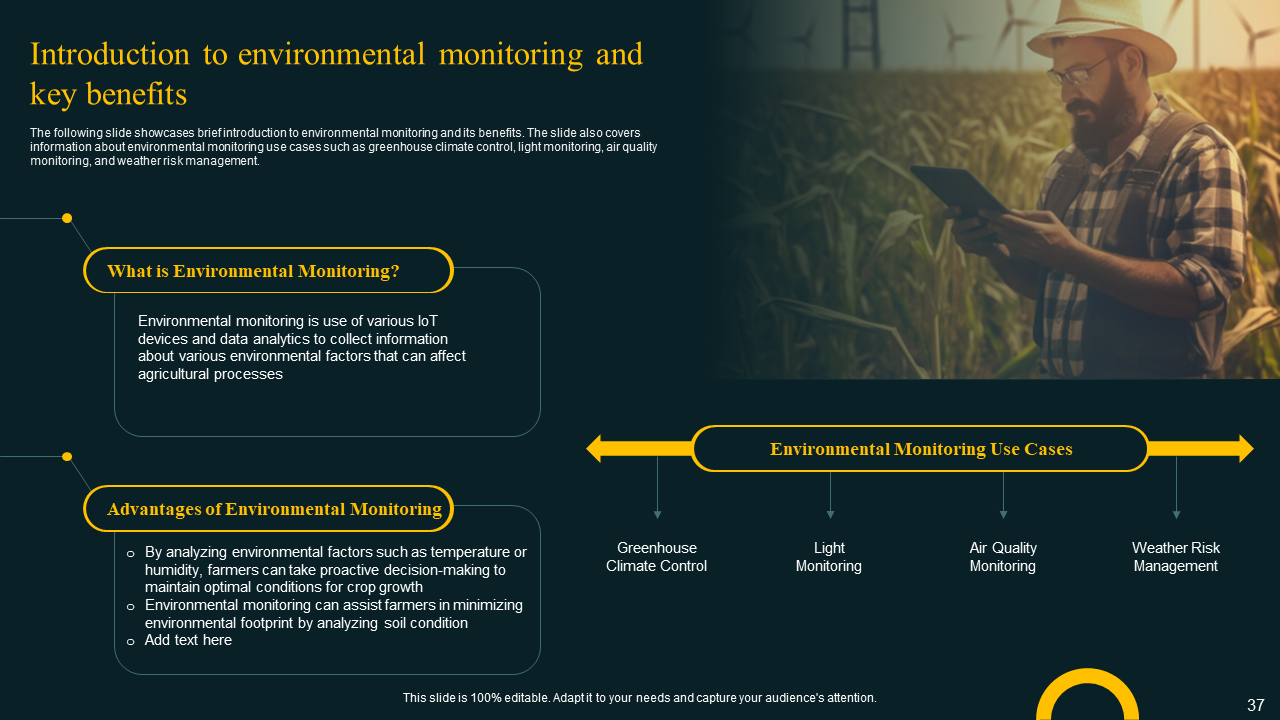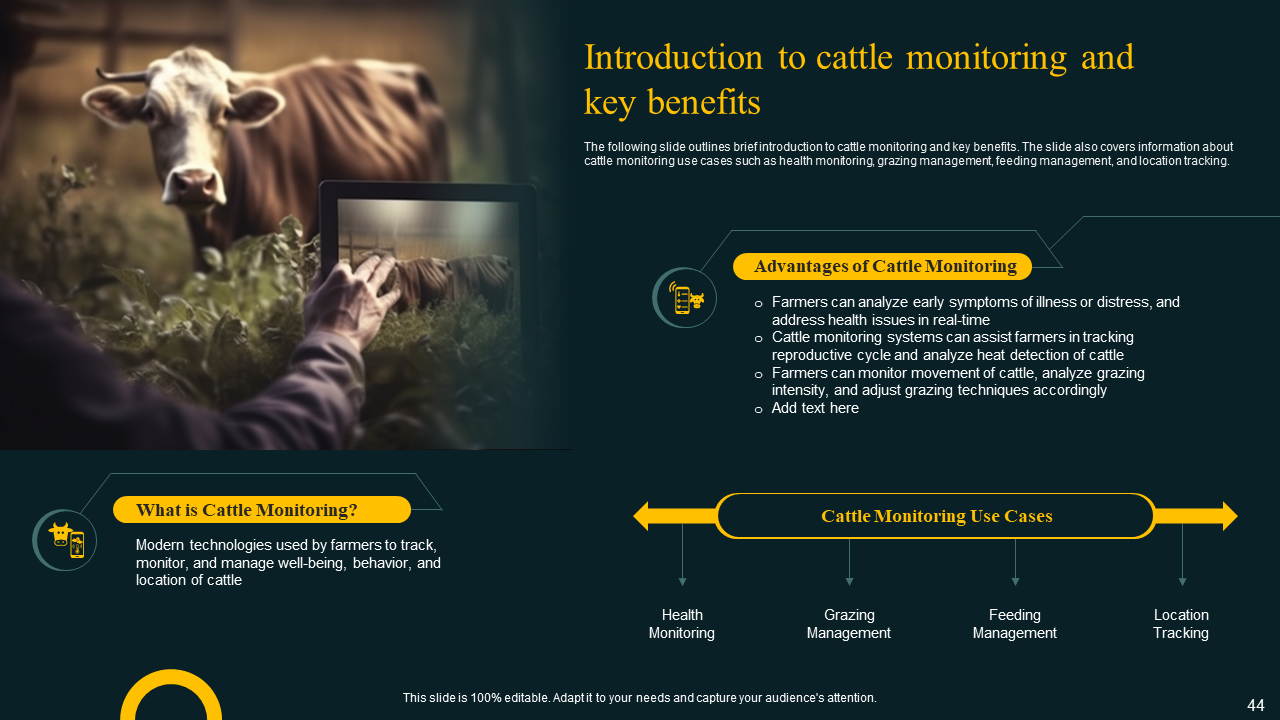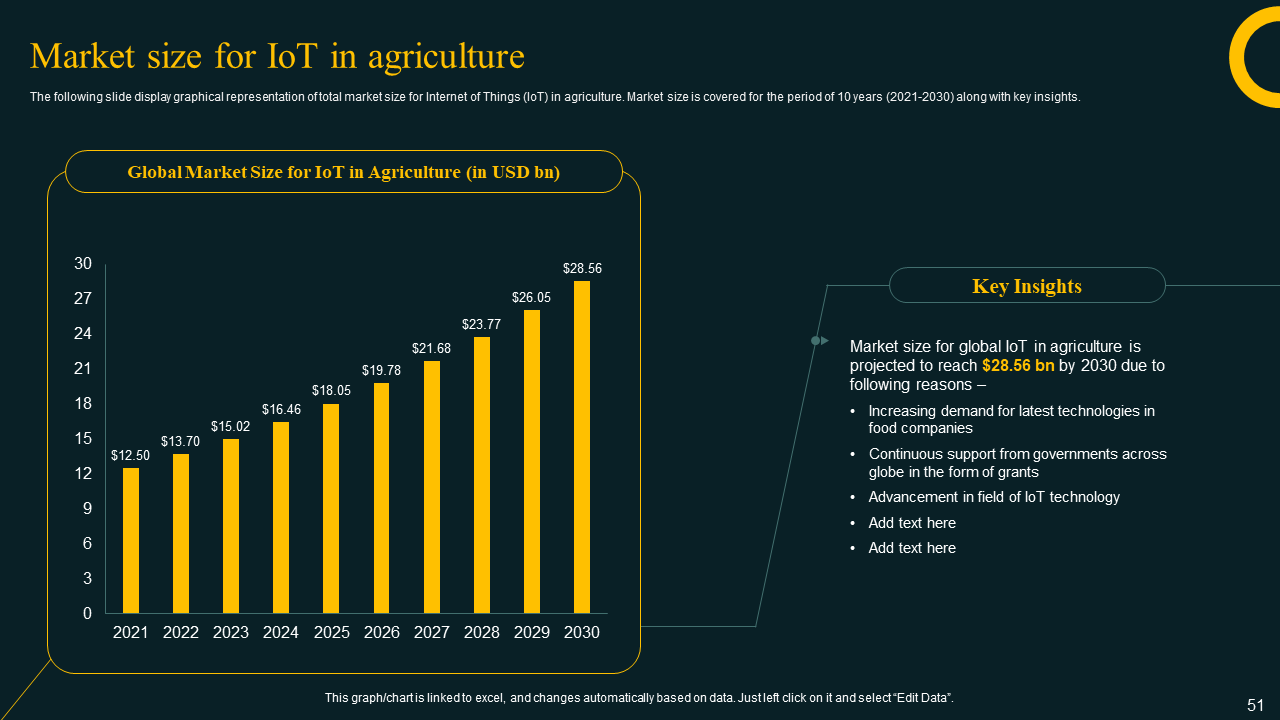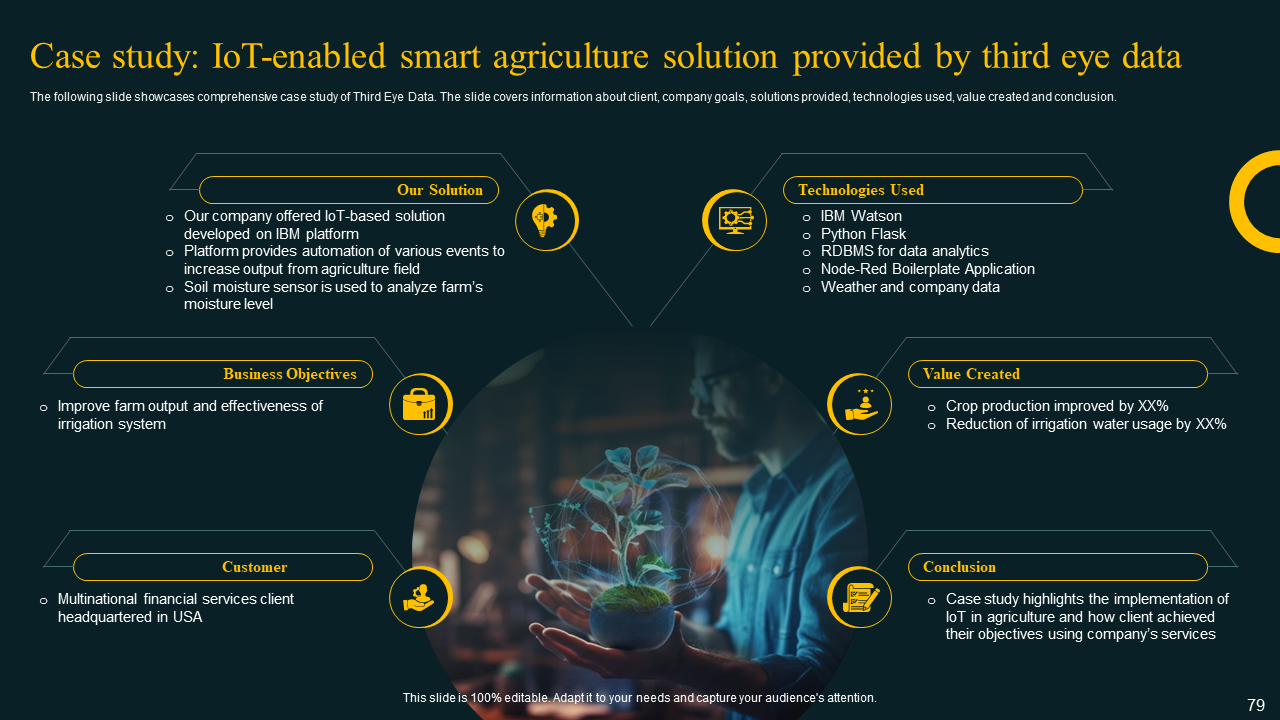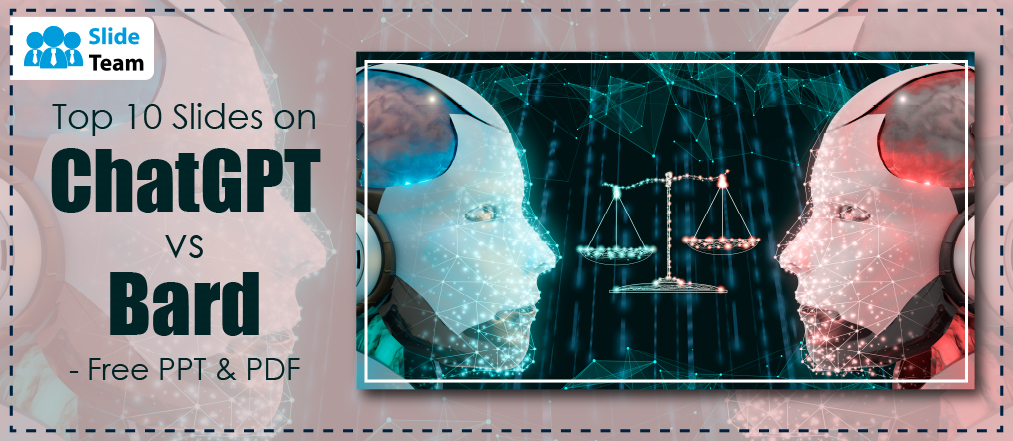Agriculture stands as a vital sector, and the need for food continues to escalate steadily. Nonetheless, the rapid population growth is growing on arable lands, transforming them into residential areas.
According to UNFAO projections, the demand for food is anticipated to triple with population growth. To meet this heightened demand, agricultural production must increase. This requires the fusion of technology with agriculture to achieve optimal outcomes.
Here, IoT takes center stage, assuming a leading role in boosting production.
Let's commence with the concept of IoT, or the Internet of Things.
What is IoT?
The Internet of Things (IoT) is a complex fusion of automation and analytics, incorporating components like artificial intelligence, sensors, networking, electronics, cloud messaging, and more to offer comprehensive solutions for goods and services.
IoT in Agriculture
IoT in agriculture makes farming smarter as it assists peasants in becoming more productive and enables them to reduce waste. Moreover, using sensors, IoT makes it easier for farmers to take care of their land by allowing them to monitor their fields closely.
So SlideTeam has curated a 100% deck on IoT in Agriculture for hassle-free work. Let's get started and discover the ideal templates for you!
Cover Slide
This beautiful PowerPoint presentation deck on the Internet of Things (IoT) in Agriculture covers IoT technology's foundational ideas, uses, and potential uses in agriculture. Also, it covers the transformative effects of IoT on farmers, including how it may boost productivity, cut costs, lower costs, limit environmental impact, and contribute to global food security.
Download this PowerPoint presentation now.
#Introduction to Smart Agriculture and its Features
The slide gives a brief insight into Smart Agriculture.
Smart farming is about improving agricultural quality and maximizing human labor by utilizing modern technologies, such as sensors and the Internet of Things.
Moreover, key features are also depicted in this slide. They are as follows:
- Gather information on temperature, humidity, soil moisture content, and crop health.
- Used by peasants to evaluate the condition of their crops or livestock remotely.
- To track animal's location, body weight, and temperature and identify any diseases.
- IoT technology has the ability to monitor crop growth and detect crop diseases.
Download this PowerPoint presentation now.
# Latest Trends Associated with Smart Farming
The slide demonstrates numerous trends that are connected with E-Farming. And major trends included are as follows:
- Usage of Drones- Drones are regularly utilized in agriculture for field mapping and crop monitoring.
- Smart Livestock Management- Animals are being monitored for health and disease using smart wearables by farmers.
- Predicting Weather Conditions- Farmers can use IoT-enabled devices (weather stations) to monitor occurrences like heatwaves or storms.
- Smart Water Management- To minimize water waste, soil moisture sensors are regularly employed.
Download this PowerPoint presentation now.
# Introduction to Agricultural Drones and Key Benefits
The slide highlights the Introduction of Agricultural Drones.
Farmers employ agricultural drones equipped with cameras and advanced sensors which are equipped with cameras and advanced sensors, to do routine agrarian tasks.
Moreover, this slide also displays the significant benefits and use cases of Agricultural Drones.
Significant benefits of Agricultural Drones are as follows:
- Drones may fly above crops to take real-time photos and data, increasing efficiency.
- Farmers can spot crop health issues with high-resolution data.
- Drones can quickly and easily visit hazardous regions like steep slopes.
Agricultural Drone use cases include:
- Crop Monitoring
- Livestock Monitoring
- Environmental Monitoring
- Irrigation Management
Download this PowerPoint presentation now.
# Introduction to Agricultural Robots and Key Benefits
The slide emphasizes the specifics of Smart Robots and underscores their substantial benefits in agricultural settings. Also, it shows how robots can do lots of different jobs like taking care of cows, helping plants grow, gathering crops, and checking soil.
Agribots, also called smart robots, are made to help farmers with hard work using modern technology.
The following are Agricultural Robots' main advantages:
- Agribots can carry out complex tasks more precisely and effectively.
- Agribots save money by automating labor-intensive operations to eliminate the need for human labor.
- Agribots are outfitted with cutting-edge IoT technology to help farmers make real-time decisions and improve farming techniques.
Download this PowerPoint presentation now.
# Introduction to Precision Farming and Key Benefits
The slide briefly summarizes Precision Farming and emphasizes its primary benefits, such as reduced input costs and enhanced environmental sustainability. Moreover, this slide also covers technologies such as variable rate application (VRA), precision planting, and automated watering.
Precision farming is modern agriculture technology that analyzes data to maximize crop yield.
The benefits of precision farming are discussed in the subsequent paragraphs:
- Farmers can lower input costs with the use of precision farming.
- By using fewer agrochemicals, precision agriculture improves environmental sustainability.
- Farmers can take proactive measures to manage their fields more effectively.
Download this PowerPoint presentation now.
# Introduction to Environmental Monitoring and Key Benefits
The slide provides a brief description of Environmental Monitoring and its advantages.
It also provides insights into environmental monitoring's applications, such as overseeing greenhouse gas emissions and mitigating weather-related risks.
Diverse IoT devices and data analytics are employed in environmental monitoring to collect data on various environmental factors affecting its utilization.
Below are the advantages of environmental monitoring:
- Farmers can make proactive decisions to preserve the best circumstances for crop growth by assessing environmental elements like temperature or humidity.
- By examining soil quality, environmental monitoring can help farmers reduce their environmental impact.
Download this PowerPoint presentation now.
# Introduction to Cattle Monitoring and Key Benefits
The slide briefly describes the main advantages of Monitoring Livestock. In Monitoring Livestock, farmers employ modern technology to track, monitor, and manage their cattle's health, behavior, and location.
Additionally, it provides information on use cases for Cattle Monitoring, including location tracking, grazing management, and health monitoring.
Furthermore, the Key Benefits of Cattle Monitoring are as follows:
- Farmers can see early signs of illness or distress and respond to problems with their health immediately.
- Farmers can follow the reproductive cycle and assess cattle heat detection with livestock monitoring devices.
- Cattle movement may be tracked, grazing intensity examined, and grazing methods modified as necessary.
Download this PowerPoint presentation now.
# Market Size for IoT in Agriculture
The slide graphically depicts the scale of the overall Internet of Things (IoT) market for Agriculture. For the ten-year period (2021-2030), market size is covered along with essential insights.
Further, Significant insights include the following factors that will cause the global IoT in the agricultural market to grow to $28.56 billion by 2030:
- Demand for the newest technologies is rising in the food industry.
- Grants from countries around the world have been provided continuously.
- Development in the IoT technology industry.
Download this PowerPoint presentation now.
# Case study: IoT-enabled Smart Agriculture Solution Provided by Third Eye Data
The slide presents a thorough case study of Third Eye Data. Additionally, the slide includes details about the client, business objectives, solutions offered, technology employed, value produced, and conclusion.
- Client: Multinational financial services client headquartered in the USA.
- Business Objectives: Improve farm output and effectiveness of irrigation system
- Solutions Offered: 1. Our business provided IoT-based product built on the IBM platform
- Platform offers automation of many actions to boost agricultural field output.
- To evaluate the moisture level in a farm, a soil moisture sensor is employed.
Moreover, the technologies employed are as follows:
- IBM Watson
- Python Flask
- RDBMS for data analytics
- Node-Red Boilerplate Application
- Weather and company data
Conclusion:
The case study demonstrates the use of IoT in agriculture and how the client met their goals by utilizing the organization's services.
Download this PowerPoint presentation now.
Conclusion
The Internet of Things (IoT) in Agriculture focuses on enhancing conventional farming practices to fulfill growing demand and cut production losses. Also, these practices are all improved by developing machine learning and analytical tools.
Further, these technologies allow for mapping, field surveys, and crop monitoring, providing farmers with helpful information. By supporting strategic farm management choices with this data, time and money are eventually saved.
Also, the templates on IoT in Agriculture on our website SlideTeam are entirely customizable and editable. Therefore, offering both pre-designed and content-ready slides to suit specific audience preferences and needs.
For any doubt, please contact - +1-408- 659-4170.
Get Free IoT in Agriculture PPT & IoT in Agriculture PDF.
FAQs
How secure is IoT technology in agriculture against cyber threats?
Security is a concern in IoT agriculture. Also, implementing strong cybersecurity measures, including device authentication, encryption, and regular updates, is crucial to protect farm data and operations from cyber threats.
Is IoT expensive to implement in agriculture?
The cost of implementing IoT in agriculture can vary widely depending on the scale of the operation and the specific technology used. However, the potential return on investment in increased yields and reduced costs can make it worthwhile.


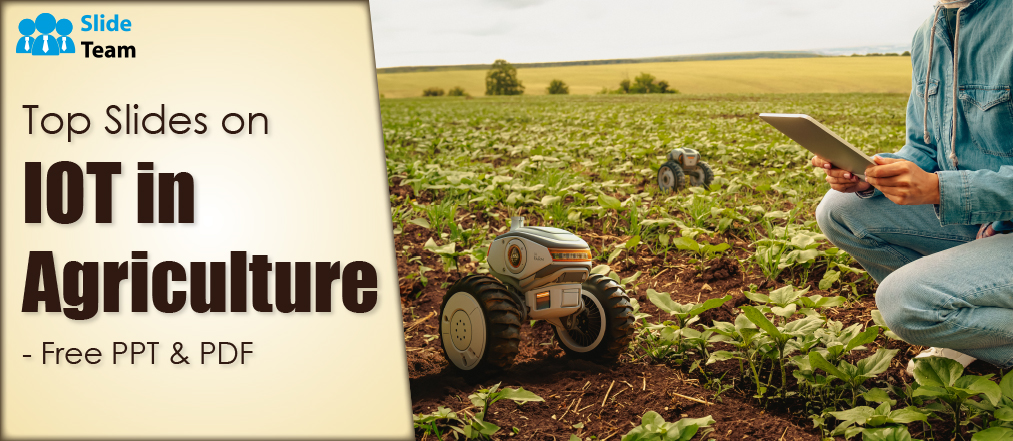


 Customer Reviews
Customer Reviews

